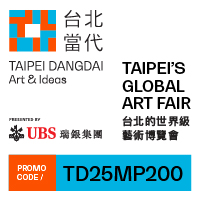Chinese Art Hit By New US Tariffs
By Ysabelle Cheung

United States president Donald J. Trump has raised proposed tariffs on Chinese goods by a further 5 percent, with a 15 percent tax on Chinese art and antiques effective September 1. Image via Flickr.
Art dealers and collectors of Chinese art and antiquities—specifically those with a connection to the United States—are bracing themselves for a wave of tariffs to be implemented on September 1 by the US government. Under this new tariff, all art created in China—including paintings, drawings, sculptures, and antiquities exceeding 100 years of age—will be subject to a 15 percent tax if it enters US soil, regardless of how it entered the territory or from where.
The tariffs are part of the ongoing trade war that has plagued the two regions since early 2018, when the US government accused China of stealing American intellectual property. In the latest volley of tariffs, US president Donald J. Trump raised the tax on Chinese works of art from 10 to 15 per cent, among other increases, in retaliation to the Chinese Finance Ministry’s announcement of new tariff hikes on USD 75 billion of US goods, such as agricultural and automotive products, to be imposed on two batches of products on September 1 and December 15.
As the trade war rages on, some in the art world are reporting business as usual. Sotheby’s CEO Kevin Ching, speaking on behalf of the auction house, told ArtAsiaPacific (AAP): “Regarding our September 2019 Asia Week auctions in New York, no items will be subject to the import tariffs on Chinese goods recently announced by the US Government, as all items were imported into the US prior to 1 September 2019. Additionally, there are no tariffs upon export of such goods at this time.” Katie de Tilly of Hong Kong-based 10 Chancery Lane Gallery, which recently exhibited paintings by Chinese artist Huang Rui at this year’s Armory Show in New York, commented that she has “not yet seen or felt any difficulties regarding US tariffs and our business.” Pace Gallery, however, has faced difficulties arising from worsening US-China economic relations, which founder Arne Glimcher cited as among the reasons for the recent closure of its Beijing outpost.
The art world was drawn into the unpredictable trade war in July 2018, after the Office of the United States Trade Representative (USTR) released a preliminary list of taxable items that included Chinese works of art. Due to the backlash that occurred—organizations such as Christie’s, Sotheby’s, and Asia Week New York all lodged formal complaints—USTR arranged a series of public hearings in Washington, DC, to allow members of the public to comment on specific items on the list. Present at the hearings on behalf of his client Global Heritage Alliance, which advocates for collectors and museums, was lawyer Peter Tompa, who specializes in trade of cultural artifacts. “The proposed tariffs on collections and collector’s pieces and antiques will only benefit Chinese interests and harm American collectors, small businesses of the art and antiquities trade, and the study and appreciation of historic Chinese cultural artifacts in the United States,” his pre-hearing submission reads. “Placing duties on such objects will not 'hurt' Chinese industry, but place further disincentives on Americans from importing Chinese cultural goods long held in third countries, including our allies in Europe and Japan.” The list was subsequently revised to exclude Chinese works of art and antiquities, but those items were re-added to the list in June 2019.
The extent of the ongoing trade dispute’s impacts on the art market remains to be seen, while dealers and gallerists have little recourse as developments take on an increasingly erratic, tit-for-tat aspect. Speaking with AAP on ways forward for those in the trade, Tompa explained, “There are not many work-arounds in this situation other than using the process to seek a product specific exemption under a procedure yet to be announced. I suppose artists could also make their art outside of China, but I am not sure how practical that is.” Commenting generally about the effect on cultural exchange, Willem Molesworth, director of Hong Kong-based de Sarthe gallery, which also has offices in the US, noted that “the ongoing trade war has undoubtedly had a negative impact on cultural relations between the US and China, two of the most important creative epicenters in the world. It is a tremendous shame, as creativity is a language we all speak and art has the power to build bridges and create lasting bonds between cultures.”
Ysabelle Cheung is ArtAsiaPacific’s managing editor.
To read more of ArtAsiaPacific’s articles, visit our Digital Library.






